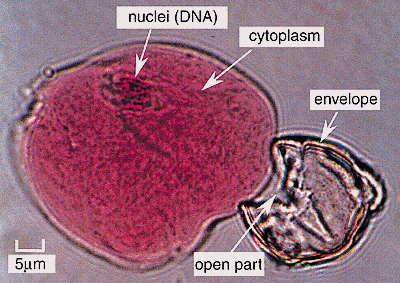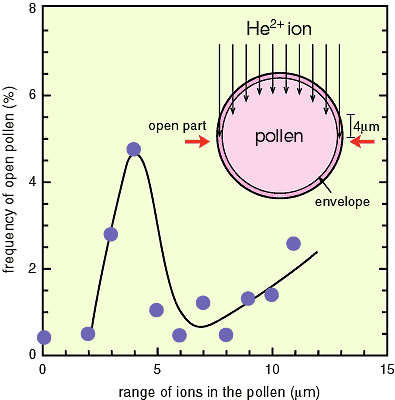Plant breeding for disease-tolerance has been extensively studied
using the gene transformation technique. One of the most difficult
operations of the gene transformation of pollen is to open the
envelope without any damage to the cytoplasm and the nuclei in
the cell.
We developed an irradiation apparatus in which the penetration
of ion beams into the pollen or the plant cell can be controlled
to a precision of 1 micrometers. Tobacco dry pollen (diam. about 25 micrometers) were irradiated
by helium ions (He2+) with various penetration depths, and the frequency of the open
pollen (Fig. 4-3) was found to have a maximum value on the irradiation
of ions with a penetration-depth of 4 micrometers (Fig. 4-4). The pollen envelope is hardly broken by the irradiation
with a higher penetration power, such as gamma rays and accelerated
electrons, since their energies are deposited throughout the pollen.
On the other hand, the cytoplasm and the nuclei in the pollen
are free from damage on the irradiation of ion beams, since the
penetration depth of ions is very small and their energies are
deposited only in the envelope of the pollen. And the irradiated
ions stop at equator band of the envelope of the pollen. At this
band, a lot of the energy of the irradiating ions is deposited
and the cellulose chains in the envelope are easily severed, as
the irradiated ions fully stop in these parts of the envelope.
So it is assumed that the opening of the envelope in the buffer
solution will result most easily. This technique has attracted
great attention as a useful means for removing the envelope of
pollen.
Since the nuclei (DNA) of pollen are hardly damaged, this technique
can be applied for the recombinant DNA experiments to improve
plants by a pollination after gene manipulation. |

